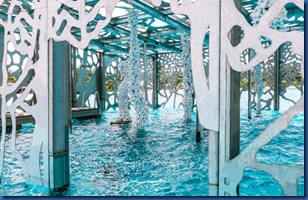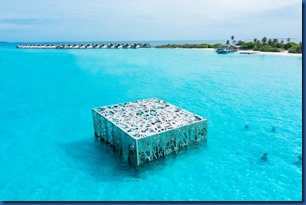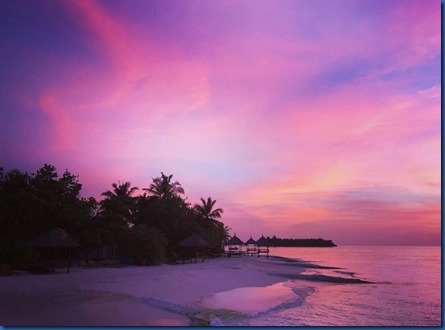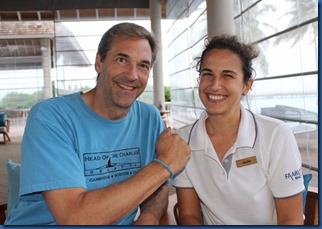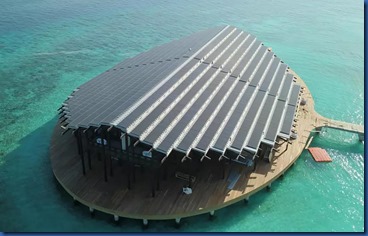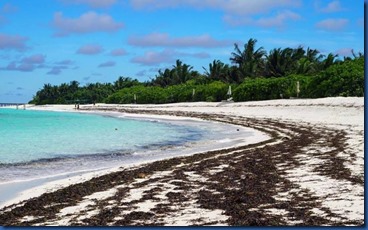I rarely visit the same island twice (there’s just too much great stuff left to discover) much less write about the same feature twice. But islands get revamped and become entirely different properties which warrant taking an entirely fresh look. And the same is true with Sirru Fen Fushi’s “Corallarium” which started life as a surf-breaking art installation, but is now morphing into a reef regeneration project:
- “The Coralarium structure, and the sculptures within, act as an artificial reef, encouraging local marine life to make it a home. Up to 5m tall, each one of the soaring sculptures is constructed of more than 500 ceramic ‘starfish’ that have been specifically designed to attract a variety of fish and crustaceans – the hard shells catch and hold biomass, or ‘fish food’, which encourage coral larvae to attach and thrive, while nooks and dark cubbyholes in the structures provide a hiding place for a variety of fish and shellfish. Each sculpture is brought to life through its union with the life that attaches to it, transforming them from concrete to textured, living organisms.”
Great to see the second life to this installation giving the coral reef new life.

